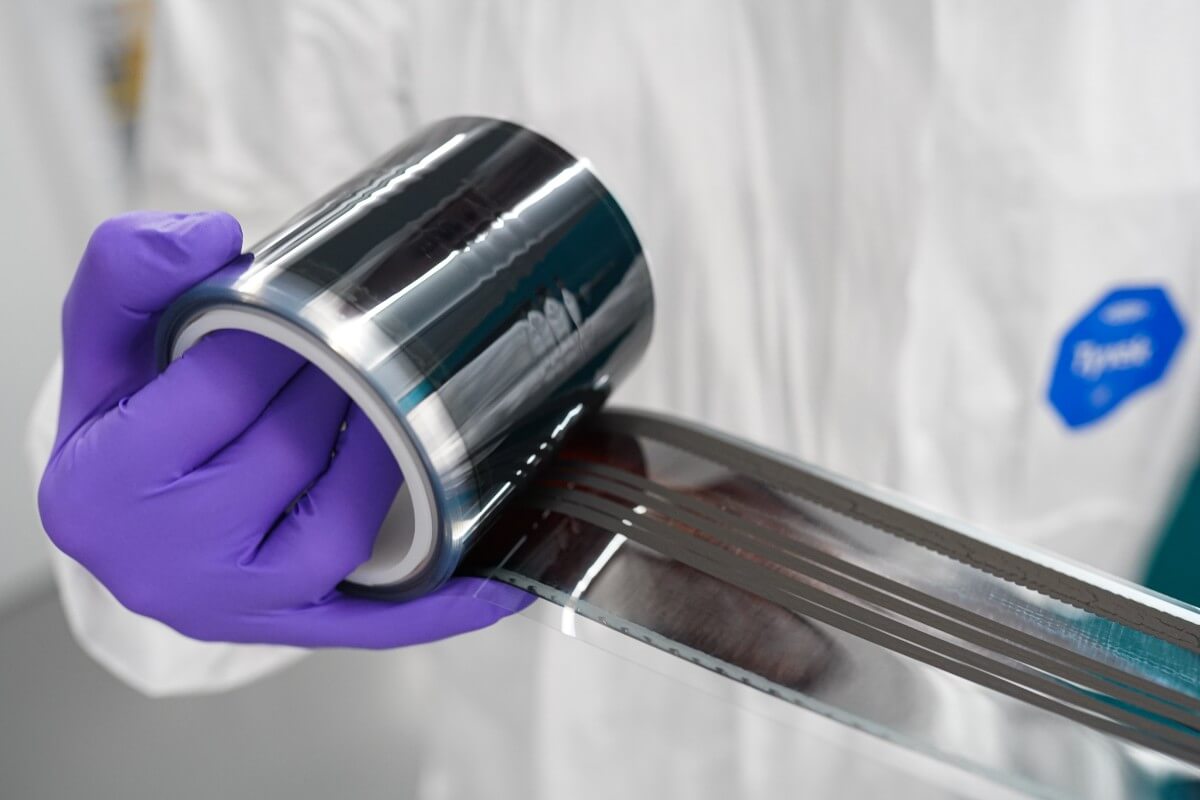
CASE STUDY:
World’s First Fully Roll-to-Roll Printed Perovskite Solar Cell
Overview
Printed carbon perovskite solar cells have shown huge promise. They have good efficiency and can be produced cheaply and easily with minimal low-cost set up. They also achieve high levels of stability. But there are still some problems that must be overcome before they reach commercial reality.
One of these problems was the gold electrode, which is typically applied after printing using an expensive and slow evaporation process.
Using slot die coating in a roll-to-roll process, SPECIFIC researchers established a new low-cost and scalable carbon ink formulation to replace the gold.
It means that, for the first time, perovskite photovoltaics can be genuinely fully roll-to-roll printable (a term often used but, until now, incorrect).
The key was identifying the right solvent mix: one which dries as a film without dissolving the underlying layer. This innovative layer can be applied continuously and compatibly with the underlying layers at a low temperature and high speed, making it possible to coat the electrode entirely roll-to-roll.
This makes high-volume manufacture easier and more economical, and is a big step towards the commercialisation of perovskite solar cells.
The next challenge for the research team is to prove that these work on buildings.
Project partners: Application Targeted and Integrated Photovoltaics Programme (ATIP)
Aims
- To create a genuinely fully-printable perovskite solar cell by finding a new formulation for the electrode layer
- To maintain solar cell performance with the new formulation
- To establish a way of printing this layer such that the process can be easily scaled-up
Impact:
- The new fully roll-to-roll coated device was printed onto a 20-metre-long flexible substrate.
- The devices with carbon electrodes provided a similar photovoltaic performance to the conventional evaporated gold electrodes.
- Additional benefits included outperforming the gold electrodes at higher temperatures and having better long-term stability.
- This unlocks the potential for perovskite solar cells to be manufactured at scale.
This research was published in Advanced Materials.

